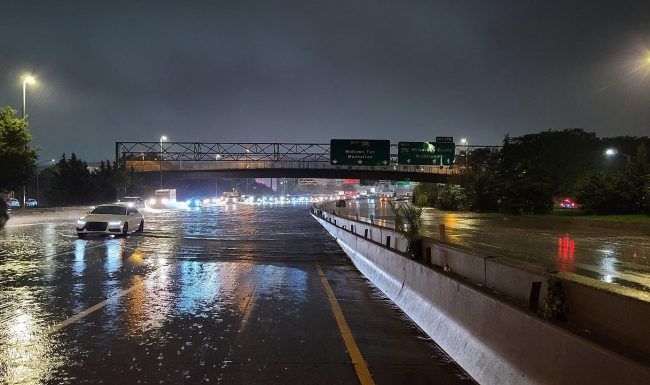Blog
Media Contact
Email: media@floodpanel.com

Catastrophic Floods Strike New York and New Jersey
Image: Long Island Expressway in New York City shut down due to flash flooding from Post-Tropical Storm Ida’s landfall. Photo: Tommy Gao via Wikimedia Commons
August 19, 2021 was the 16th anniversary of the most destructive and deadly hurricane on record for the USA: Hurricane Katrina. On this day, as if to acknowledge the anniversary, Hurricane Ida made landfall in Louisiana, coming in as a dangerous CAT-4 storm. In a few days, Ida would go on the record books as the 2nd most destructive storm in US history, after Katrina. The passage into the record books was a strange and circuitous journey.
With massive preparation efforts and evacuation orders arranged before the landfall, officials were hoping against hope that there would not be another disaster like Katrina. But the signs were not looking good, and with wind gusts of up to 172mph, this storm would be a monster in its own right. After striking shore in Louisiana, Ida maintained its CAT-4 status over land for about four hours, and then it weakened to a still-dangerous CAT-3. As the storm unleashed an almost incomprehensible amount of precipitation on the area, the hurricane-force winds tore homes and businesses to splinters. Power lines went down like dominoes, and those who had defied the mandatory evacuation order- as well as all those who had been unable to leave- began to suffer through the sweltering heat without AC, refrigeration, gasoline, medications, and perishable food staples like milk and meat. But still, Ida was not done- not by a long shot!
As FEMA officials in the Deep South began to release a sigh of relief that the initial death toll appeared to be very low, Hurricane Ida veered to the northeast- a heavily populated region for which large hurricanes are a relatively rare event. As the storm moved on, through Mississippi, Alabama, the mid-Atlantic states into Virginia and Maryland, the main concern was tornado activity. This fear was not unfounded, and at least seven tornadoes touched down in Alabama alone. Another tornado in Maryland caused significant damage to the Capitol city of Annapolis. But even now, Ida had not wrought even half of the damage and loss of life that would ultimately be tallied to this storm. It was in the states of New York and New Jersey where the storm would make its deadly mark.
Almost as soon as the storm arrived in New York, Mayor Bill DeBlasio pronounced it, “…an historic weather event”, and for good reason. In just a couple of hours, 6-10” of rain fell in the NYC area, and the consequences were dire. Brooklyn, Manhattan, and Queens were almost immediately flooded. Rainwater gushed into the subway system and produced nightmarish scenes of underground stations being quickly filled with water. The trains attempted to push through the water to get out of the subterranean death traps that had once been safe, dry tunnels. City buses were seen plowing through water so deep that passengers had to stand on the seats to stay above the water. Central Park was pounded with over 3” of rain in just one hour, breaking a record that had stood since 1913. That same historical record had also been broken two weeks earlier by Tropical Storm Henri, and now that brand-new record from Henri was already obliterated. It was truly a 100-year flood event in New York City!
Both New York and New Jersey declared a state of emergency before the day was out. But why was Hurricane Ida causing even more destruction in this northern area, more than a thousand miles from where the storm made landfall? The answer is this: bad luck. By the time Ida reached the New York/New Jersey region, the hurricane-force winds had long since lost strength. But the core of the storm was still packed with rain, and then it unfortunately merged with another localized storm front. When this happens, massive amounts of precipitation is often the result, and we saw this in New York and New Jersey. The damage in the New York City alone will top $50 million. But more importantly, 18 people lost their lives, and many of those unfortunates lived in basement apartments that lacked any type of flood barriers.
Ten years ago, Hurricane Sandy laid waste to the New York area, and the aftermath of that storm led to calls for better planning and improvements in flood defenses. Many new mitigation efforts have since been put into place, but Hurricane Ida has exposed the wide gap between what has been done and what still needs to be done. This month, during Hurricane Ida, New York City faced its first-ever Flash Flood Emergency. It will surely not be the last.

